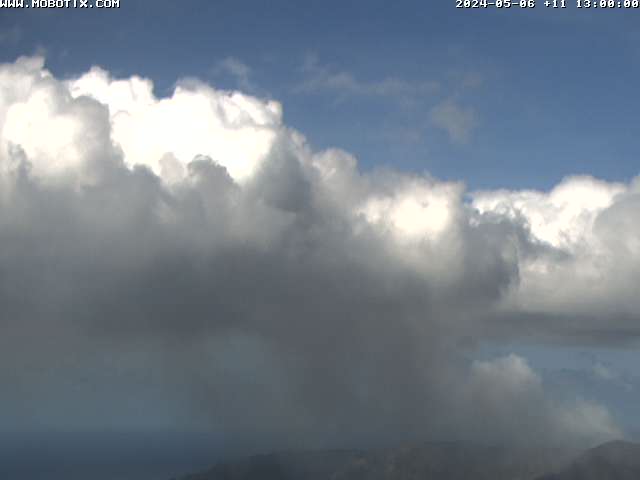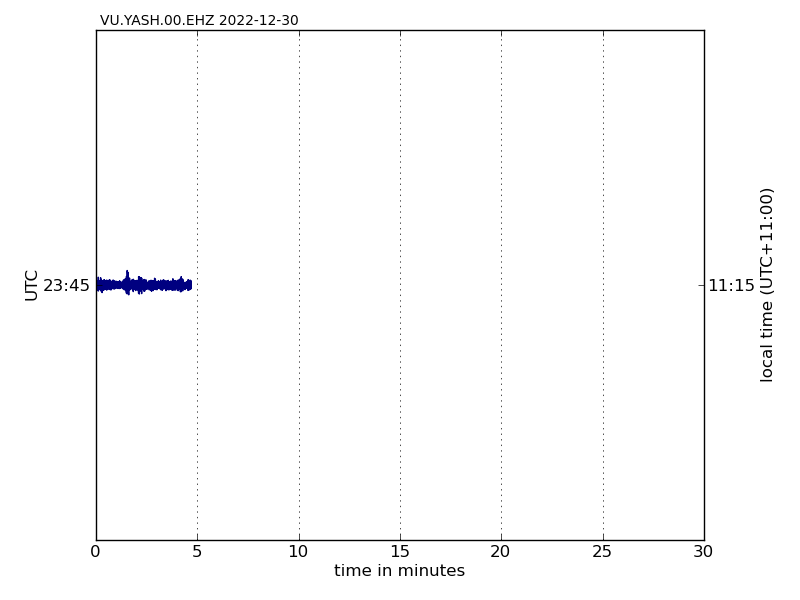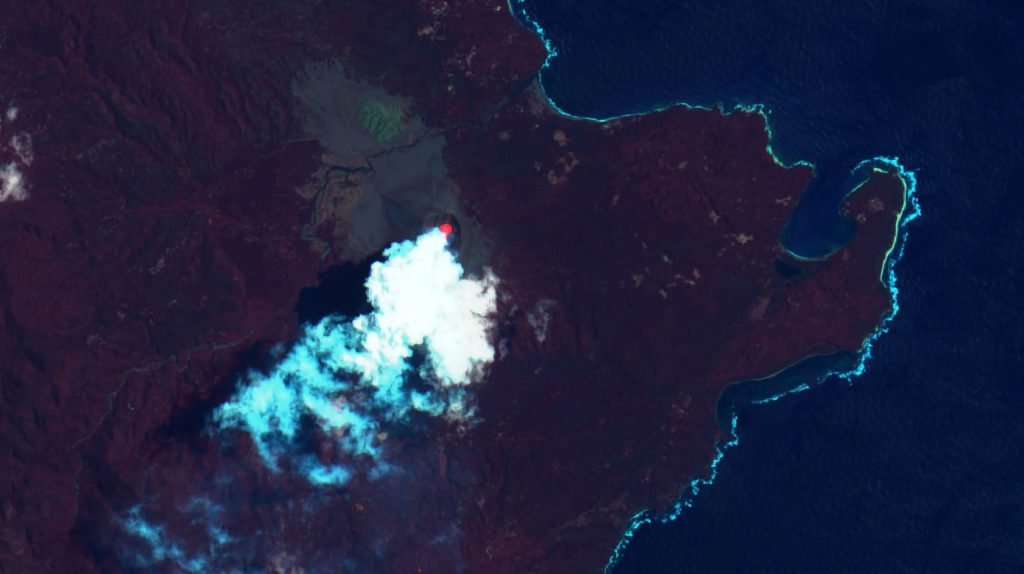Contents
Is Mount Yasur safe?
Read on for all the facts about the general safety situation for Mount Yasur.
Vanuatu is in the “Ring of Fire” and so historical information about safety is only one part of the picture.
When planning and before travel, you really should check the latest travel and safety advice – UK FCO travel advice for Vanuatu is here.
Educate yourself with the info in this article AND the latest FCO advice.
Mount Yasur
Yasur volcano on Tanna Island has been erupting with large incandescent bombs, frequent explosions, lava fountains, and ash clouds for much of its known history. There are around 500 eruptions every day.
Sulphur Bay on the eastern coast of Tanna Island, was the first part of the island visited by Europeans when the glow of Mount Yasur attracted Captain James Cook in his ship “Resolution”, in 1774.
Mount Yasur has been erupting continuously at low levels ever since those first observations and likely for centuries before.
There is a fascinating painting at the National Maritime Museum in Greenwich, London, made by William Hodges in 1775.
It shows Resolution at Sulphur Bay on the 5th of August 1774 with Mount Yasur in the top right behind the ship’s masts. Image courtesy Wikimedia Commons.
Yasur is one of the most active volcanoes in the world and because the regular eruptions are often visible from the sea, it has been called the “Lighthouse of the Pacific”.
Sulphur bay is the home of the John Frum cargo cult, a religion that believes an American second world war GI lives inside Mount Yasur with his men.
There’s even a cargo cult on Tanna that worships Price Philip, the Duke of Edinburgh, as a divine being…
Yasur volcano facts
Mount Yasur is a cone volcano 361m high with a circular crater nearly 400m in diameter. It is a stratovolcano made from layers of hardened ash and lava from previous eruptions. The steep sides demonstrate the relatively low speed of lava flow.
Eruptions occur several times an hour. The cone and surrounding ash plain on the western slopes are largely un-vegetated. The crater is relatively easily accessible on foot or by car from the visitor centre.
Stronger eruptions can send lava bombs over 100m above the crater rim. Large bombs sometimes land hundreds of metres away.
Mount Yasur safety monitoring
Answering the question “is Mount Yasur safe?” requires constant monitoring.
The Geo-Hazards Division of the Vanuatu government’s Meteorology and Geo-Hazards Department (VMGD) monitors volcano activity in the interest of the local population and tourists.
The monitoring uses seismometers that measure ground activity, video camera feeds, and satellite imaging which senses thermal activity and sulphur dioxide emissions.
Mount Yasur safety alert levels
The monitoring system classifies activity into one of several levels, which are shown below.

Mount Yasur safety risk
Is Mount Yasur safe? You should know that being near the crater is always dangerous, whatever the activity level. Visitors are always at risk from flying lava bombs, sulphur gas, and potentially landslides.
In 1975, fifty thousand cubic metres of the flank collapsed and slid down to the base, leaving a 100m wide scar. Another landslide inside the crater occurred in October 2019.
Major eruptions could occur at any time, even when the prevailing activity is low. An eruption may occur at any level and may not move in sequence between levels but can change rapidly.
Activity does tend to fluctuate gradually, meaning that periods of high activity can usually be recognized, but this does not give a foolproof prediction of what will happen next.
Lava bombs have fallen on the main viewing areas while tourists are present, and on the main pathway used by tourists to go up to the crater.
In darkness, the glowing red lava bombs can easily been seen and you may think that you could easily avoid them.
You should know that lava bombs can travel at over 500mph and eruptions usually include “non-juvenile” bombs which are black and cannot be seen at night.
I don’t think anyone who is interested should be put off visiting.
The risk is a serious one, and you should understand what the risk is, but you should also put that into context against the relative risk of many other daily activities.
The purpose of this article is not to scare you off, but to explain the risk so that you can make an informed decision when considering is Mount Yasur safe?
Based on my visit, the staff and guides strictly enforce the access rules, but other visitors in the past have reported less strict control.
Rather than relying entirely on the staff, visitors have a responsibility to educate themselves before their visit, and make their own judgment.
The prevailing opinion of the scientific community is that although there is little danger when the volcano is having regular explosions at intervals of a few minutes to tens of minutes, there is a constant danger and visitors should be informed as such.
Here is a PDF of the Mount Yasur tourist safety information.
Yasur volcano safety exclusion zone
There is a permanent exclusion zone within 395 m of the eruptive vents where access is prohibited due to multiple hazards.
The biggest risk is from large incandescent bombs up to 4 m in diameter which have been ejected from the vents onto the crater rim in the past, resulting in fatalities.
Mount Yasur current activity
Yasur has been at activity level 2 since October 2016, indicating that it is in a major state of unrest.
The latest Mount Yasur activity report is found here. All Vanuatu volcanoes are listed – scroll down to see Tanna Activity.
Mount Yasur eruption history
In October 2019, a landslide occurred from just below the viewing area, which covered up one of the main vents in the crater below.
In 2013 major eruptions caused ash to fall as far away as Erromango island, 150km to the north, and led to widespread damage of vegetation on Tanna.
Volcano expert John Seach witnessed lava bombs as large as 4m being thrown 250m away from the cone onto the flanks of the volcano.
Here is a video showing the eruption. At 4-5 seconds you can see a large lava bomb being thrown onto the lower slopes near the car parking area.
In 2010, activity reached level 3, and the ash clouds were enough to briefly disrupt air travel.
In 2002 a magnitude 6 volcanic earthquake occurred. This is the largest since seismic monitoring began in 1992.
In 1999 during a period of level 4 activity, lava bombs were thrown beyond the car parking area over 600m from the crater.
You can find Mount Yasur eruption activity reports going back to 1986 here.
It’s very interesting to scroll through the timeline of activity reports to see how the nature of the activity has changed over the years, and there are some brilliant photos and diagrams.
Mount Yasur satellite images
You can view previous satellite imagery at Sentinel Hub Playground.
There are some fascinating images of thermal activity. For example, this image from the 7th of Match 2019 showing high thermal activity:
And this one from the 17th, showing distinct thermal signals at the north and south vents. Images courtesy Sentinel Hub Playground.
Mount Yasur deaths and injuries
In January 1994 and then in February 1995 there were 3 fatalities. One incident involved two tourists being hit by a 15kg lava bomb.
This report of the Mount Yasur deaths includes a diagram showing the extensive area hit by volcanic bombs during the 1994 activity in relation to the viewing and visitor parking areas.
Is Mount Yasur safe?
There is no getting away from the fact that visiting an active volcano carries risk.
You have to make up your own mind what you consider to be an acceptable risk. For me, when visiting Yasur your biggest risks are the car journey there or tripping over on the uneven surface around the crater.
Activity is fairly consistent and means that most visits to the crater are trouble free, but there is always a constant and serious risk from unexpected lava bombs, ground movements, and volcanic gasses.
The only way to avoid all risk from the volcano is to stay off Yasur and the surrounding area. The permanent exclusion zone exists because of a very high threat of volcanic bombs and you should obey the exclusion.
When visiting, always stay alert and watch for bombs in the air. When you see lava bombs, stay still. However, if a bomb does not appear to be moving up/down or left/right then it may be coming straight towards you and you should move quickly while continuing to watch the bomb.
Official Mount Yasur tourist safety guide.
Information leaflet for volcanic hazards on Tanna.
Is Vanuatu safe?
Vanuatu also has relatively frequent earthquakes, and there is a cyclone risk from December to April.
According to the United Nations, Vanuatu has the highest natural disaster risk out of 172 countries measured.
The risk index determines the risk of becoming a victim of a disaster as a result of vulnerability and natural hazards such as earthquakes, volcanic eruptions, storms, floods, droughts and sea level rise, and so in general Vanuatu is an at-risk country.
This does not mean that Yasur is dangerous, rather that the whole of Vanuatu is in a fragile position with weather and climate change, coupled with active geology.
Vanuatu is prepared for Tsunamis caused by volcanic earthquakes, and monitors tropical cyclones.
Sources and further reading
The information in this article comes chiefly from the Vanuatu Meteorology and Geo-Hazards Department, and The Smithsonian Institution Global Volcanism Program.
The following sources offer some superb photos of the volcanic activity at Yasur that show very clearly the risks involved in visiting an active volcano.
If nothing else, you should read this first link which has some stunning photographs.
- Photo Volcanica – Mount Yasur
- Volcano Live – Mount Yasur
- Smithsonian Institution Global Volcanism Program
- Volcano Discovery – Mount Yasur
- Mount Yasur live webcam, satellite, and seismic activity data
- VMGD current alert level for Mount Yasur
- Mount Yasur visitor safety leaflet
- Tanna Island long term volcanic hazard map
- Vanuatu Volcano Monitoring System
- Yasur Volcano Survival Guide
- Types of volcanic risk at Mount Yasur
- List of volcanoes in Vanuatu
Mount Yasur FAQ
How tall is Mount Yasur?
Mount Yasur is 361m high with a circular crater 400m in diameter.
How many times has Mount Yasur erupted?
Mount Yasur erupts about 500 times a day and has been continuously erupting for hundreds of years. It was first recorded by Europeans in 1774 when Captain James Cook’s Resolution landed in Sulphur Bay.
Has anyone died at Mount Yasur?
3 people have been killed by volcanic bombs at the crater of Mount Yasur, 2 in 1994 and 1 in 1995.
When did Mount Yasur last erupt?
Mount Yasur erupts continuously, usually several times per hour. The last period of major eruption activity was in 2013.
What type of volcano is Mount Yasur?
Mount Yasur is a stratovolcano and a cone volcano.
Is Vanuatu safe?
Vanuatu lies on the Pacific ‘Ring of Fire’ and regularly experiences natural disasters, including cyclones, volcanic activity, earthquakes and tsunamis, with over 2,000 seismic events reported each year. Most visits are trouble free but you should check your government’s travel advice before travel. UK FCO travel advice for Vanuatu is here.
Does Vanuatu have volcanoes?
Yes, there are 170 volcanoes in Vanuatu, of which several are frequently active, including Yasur, Ambae, Ambrym, and Lopevi.
Best Vanuatu tours
Best books and guides
The best and most comprehensive guide book for Vanuatu is the Lonely Planet Guide to Vanuatu and New Caledonia.
A better value option is the multi-country Lonely Planet South Pacific guide.
An interesting and very funny read before your trip is Getting Stoned with Savages by Maarten Troost who is most well-known for his best-selling and equally brilliant The Sex-lives of Cannibals.


















